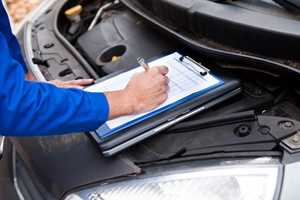Every time you get behind the wheel of a car is a different experience. Whether it’s the route you’re travelling, the people you have with you, the conditions outside the car or the type of vehicle you’re driving, you need to be alert and aware at all times to ensure that every journey is a safe one.
For example, if you should ever need to drive with a trailer, there are some important safety precautions to keep in mind. A trailer is an added element to the driving experience that requires some extra knowledge and skill to tow safely.
All types of trailers (including caravans) can affect the handling of your car. You need to take into account the potential effects on fuel consumption, acceleration, braking ability, control and manoeuvrability.

Rules and regulations
There are certain regulations that apply to trailers, so make sure to check yours is compliant with the rules in your state. No passengers are permitted to ride in any trailer or caravan while it is being towed.
Certain licence classes are prohibited from towing anything, namely learner drivers and learner and provisional motorcycle riders. If you hold a P1 car licence, you are allowed to tow small trailers only with up to 250kg of unloaded weight.
Trailers need to be the right size and type for the task you’re using it for. They also need to be suitable for towing behind your particular vehicle. Check the manufacturer’s specifications for the maximum towing mass for your vehicle.
Make your towing vehicle and trailer roadworthy
Both the vehicle you’re driving and the trailer itself need to be road-worthy, so make sure everything is in proper working order.
Check that the wheel-bearings, suspension and brakes on your trailer are all functioning as they should be. Make sure the tyres are properly inflated with plenty of tread. All of your lights and safety chains should be fully operational.
You should only start driving once you are satisfied that all of these service checks have been made thoroughly. During your trip, don’t forget to check that all couplings, doors, hatches, covers and the load or equipment in the trailer is properly fastened.
Driving tips
You will need to avoid making any sudden changes in direction as you won’t have as much control over you vehicle and the trailer behind. If you feel the trailer swaying, resist the temptation to brake immediately (unless it’s an absolute emergency). Simply take your foot off the accelerator and and slow down gradually to correct the swaying. If your trailer has brakes, use these to stop the swaying.
If you are on a road without any street lights, you need to drive at least 60 metres behind heavy vehicles or other vehicles with trailers unless you plan to overtake.
At all times, use the accelerator, brakes and steering wheel smoothly and gently to avoid any sudden jolts. If travelling downhill, switch to a lower gear to give you more control over your vehicle and reduce the amount of strain on the brakes.
Look further ahead than you normally would, because you will need more time to react to changes in traffic or road conditions ahead. Before entering any corner or curve, slow down your vehicle with plenty of time to spare.
You will also need to give yourself a longer distance than normal to brake, overtake or merge into a stream of traffic.
You do not need to purchase a separate greenslip for your trailer or caravan. The vehicle being towed is under the ctp insurance of the towing vehicle.
your opinion matters: